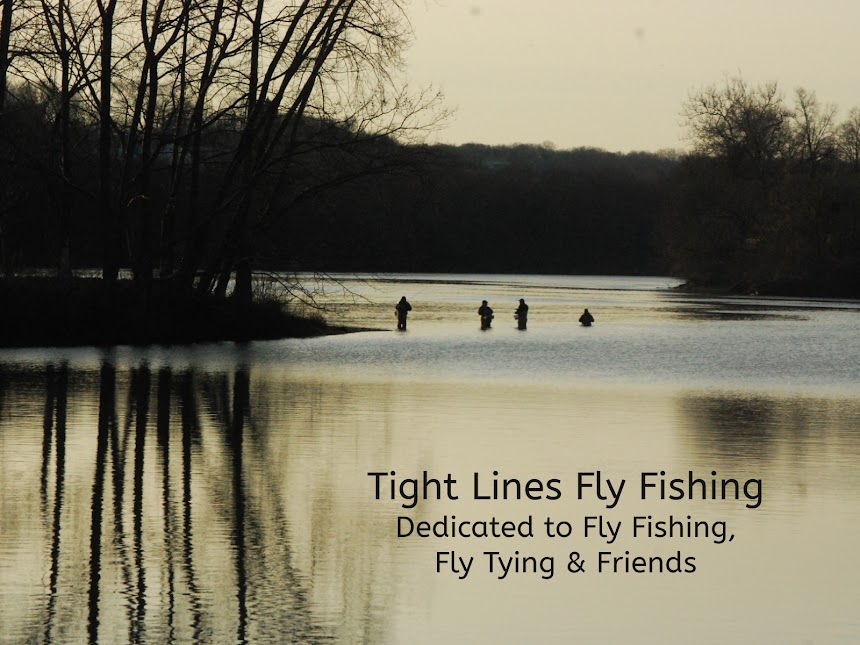Pheasant Tail 'Hot Spot' Variation
Hook: Firehole Sticks 317 Size #16 (you can also use a TMC 2457, or TMC 2487 or
any Curved Nymph/Emerger hook).
Thread: UTC 70 Denier in Fluorescent Orange.
Bead: 3.0 mm Copper Tungsten Bead.
Tail: 3-4 Pheasant tail fibers.
Rib
(& Tail Hot Spot): UTC Hot Orange
Wire BR Size.
Body/Abdomen: Approximately 4 Pheasant Tail Fibers.
Collar/Thorax: Natural CDC fibers (from dubbing loop); followed
by ‘Hare’s Ear’ dubbing (from a dubbing loop).
Hot
Spot Behind Bead: Fluorescent Orange
Thread.
When trying to determine what fly to submit for the Fly of the Month, I try to choose one that’s catches fish, use’s materials that aren’t too difficult to obtain, and that I’ve used or field tested at least a few times. I’ve been doing the Fly of the Month for many years. This is the second time I’m doing a variation on the a Pheasant Tail Nymph. (A few years ago I featured the Quasimoto Pheasant Tail Nymph.) Most fly guys already know what a great fly the Pheasant tail iss. Well here’s a variation with a few triggers that just might catch that finicky trout. It has an Orange Wire Hot Spot at the rear, and an Orange Thread Hot Spot in the front. It also has a CDC Fiber and Hare’s Ear dubbed thorax. Why wouldn’t a fish want to eat this fly!
Before tying this fly, keep in mind that there are many new manufacturers of hooks out there. Some are from China, the USA, or Europe. The actual sizes of these hooks can vary substantially. No matter which hook you use, or the size, what’s important are the proportions of each segment of the fly.
To tie this fly, begin by placing your bead on the hook. Start your thread behind the bead. Cut your tag end as you wrap down the hook shank to where you would normally find the hook barb (assuming your using a barbless hook). Next, tie in your Pheasant Tail fibers for your tail. They should be approximately the length of the hook shank. Wrap your thread all the way up to behind the bead to firmly secure them and create an even thread base body. Take a 4” piece of your Rib wire and tie it in behind the bead. Wrap it down to your Pheasant Tail fibers then bring your thread up to the midpoint of your fly. You are now going to create a ‘tag’ with the wire. Make 4-5 ‘counter’ wraps with your wire to create a wire tag. Leave the wire hanging off the hook shank so you can use it as a rib. Next, tie in 4 Pheasant Tail fibers to be used for the body of the fly. Secure it down to the wire tag and then bring your thread back behind the bead. Take even wraps of the Pheasant Tail fibers up the hook shank, leaving an ‘eye’ length space before the bead. Tie and clip it off. With your wire, palmer and rib your fly. Tie and clip the wire off at the same location where your Pheasant Tail body ends. Now, create a small dubbing loop with your thread. Take fibers from a single natural CDC feather and place them into your loop. Spin and form a rope. Take 2-3 turns with your rope. Your fibers should surround the hook shank and result in a ‘wet fly’ type appearance. Make sure to leave room behind the bead for another additional dubbing and a hot spot. Create another small dubbing loop with your thread. Your going to place ‘your preferred’ Hare’s Ear dubbing in the loop and for another rope. Take 2-3 turns with your dubbing loop. Clip and tie off your ‘Hare’s Ear’ dubbing loop. Finally, create a small thread ‘Hot Spot’ right behind the bead. Clip and tie off your thread.
‘The Fly Fiend’ has a great video on how to tie this fly below:
If you have any questions about this fly or would like to submit a Fly of the Month I can be reached at 203 305-3850 or at pdinice@frontier.com .



No comments:
Post a Comment